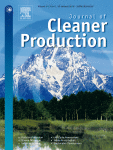The land-network problem: ecosystem carbon balance in planning sustainable agro-food supply chains

Highlights
- • An inclusive definition of the agro-food ecosystem is given with respect to the goal of achieving climate stability.
- • An original framework to design sustainable agro-food ecosystems from farm-to-fork is illustrated.
- • A planning problem, named land-network (LN) problem, is illustrated and solved via linear programming.
- • Quantifying both economic and environmental metrics, the framework leads the planning of sustainable food supply chains.
- • The framework supports agro-food firms in complying with environmental policy tools as carbon taxes and carbon trading.
Abstract
Global food demand will double by 2050 and strain agro-food supply chains. The increasing relevance of non-agrarian activities within the food supply chain mandates a systemic perspective for addressing sustainability. We consider the food supply chain as an ecosystem and define more inclusive boundaries. We present a design framework that supports strategic decision-making on agriculture and food distribution issues while addressing climate stability. We describe the methodology used to construct the framework, which entails a multi-disciplinary approach. An original land-network problem merges localized and large-scaled decisions as land-use allocation and location-allocation problems in an agro-food network. A linear programming model optimizes infrastructure, agriculture, and logistics costs and also balances carbon emissions within the agro-food ecosystem. A regional potato supply chain illustrates the effectiveness of the proposed model. Findings show the interdependency between infrastructure, production, distribution, and environmental resources. Results highlight the consequences of unbalanced planning focused solely on cost efficiency. In conclusion we identify enabling conditions, drivers and metrics for the design of cost effective and carbon balanced agro-food ecosystems.
Keywords
- Food supply chain;
- Sustainability;
- Land-use;
- Carbon footprint;
- Linear programming;
- Climate change